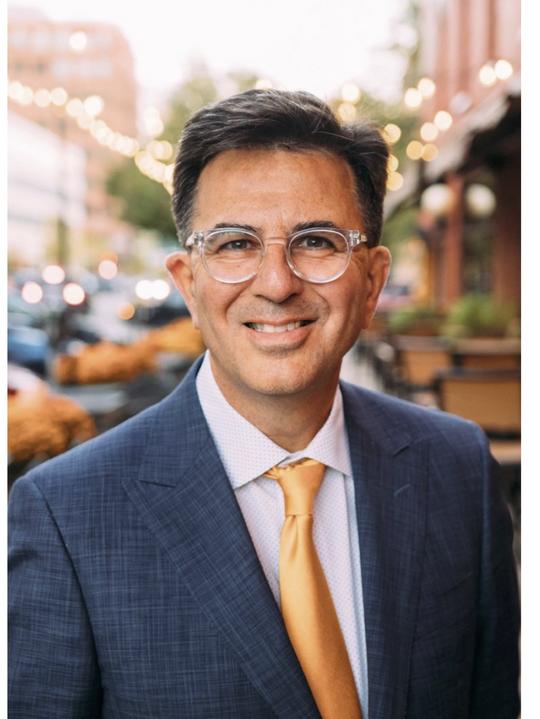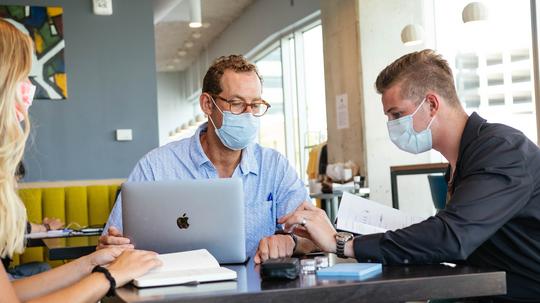
Before the first wave of COVID-19 lockdowns had expired, businesses, policymakers and forecasters began focusing on economic recovery. Would employment and spending rebound as sharply as they fell? And what, if anything, could communities and governments do to accelerate that? In one Minnesota city, an economic development agency set out to find answers.
Rochester’s Destination Medical Center Economic Development Agency worked with HR&A, an economic development analysis firm based in New York, to forecast the changes the community could expect.
“We put a big effort into trying to understand the impact that COVID would have on our future,” said Patrick Seeb, executive director of Destination Medical Center Economic Development Agency. “Because we’re still in the middle of the pandemic, nobody is certain what the impact will be. But we do know that there is going to be a change in the workforce and where and how people work. Travel patterns are going to change, and we know COVID has accelerated trends that were already going on, such as online ordering and delivery.”
After their analysis, HR&A projects the Rochester economy will experience a gradual recovery over the next two years or more. The exact pace will depend on the effectiveness and rollout schedule for vaccines and improved therapeutic treatments for the virus. Four of the key findings were:
• Rochester will experience excess capacity in its downtown office space.
• The city’s retail businesses and restaurants that depend heavily on employees and visitors will be disproportionately affected.
• Hotel occupancy will remain below historical averages for some time, particularly given the hotel construction pipeline.
• Housing demand will remain relatively strong, including growth in the number of people living downtown. This will provide support to retail businesses in the city core.

The Destination Medical Center Economic Development Agency, known as DMC, is a 20-year, $5.6 billion public-private partnership designed to fuel growth in Rochester by coordinating private development and public infrastructure funding in efforts that build on the region’s strength as home to Mayo Clinic. Mayo Clinic is a significant economic driver. It’s the largest private employer in Minnesota, directly employs more than 39,300 people in the Rochester area and brings an estimated 1.2 million patients and their families to the region.
As it heads into its sixth year, Seeb said DMC wanted to ensure the organization’s long-term plan supports the region’s COVID recovery.
How Rochester has fared
Rochester has and will continue to fare better than many other cities, HR&A said, bolstered by the strength of the city’s health care sector and DMC’s economic development tools. HR&A recommended economic development strategies focus on five areas:
• Support existing local businesses.
• Prioritize public infrastructure.
• Reuse excess real estate capacity creatively.
• Diversify the economy.
• Support development proactively.
The state funding for DMC is designated for public infrastructure projects that, in turn, will support additional private investment. That means DMC can’t, for example, offer rent subsidies for businesses struggling because of COVID. Instead, it must focus on infrastructure projects that could support long-term growth, Seeb said, so the organization must be creative in its approach to supporting economic recovery.
“There’s a lot of evidence that great public space will catalyze and attract new investment and new development,” he said. “We see all kinds of evidence of that, but what we’re saying is that’s not good enough. What we’re saying is, what if we design our public spaces so that they become part of the business incubation and business development strategy?”
New concepts for restaurant entrepreneurs
A public park project called Discovery Walk is an example of this approach. Discovery Walk is a four-block corridor along Second Avenue SW in downtown Rochester slated for redesign to better accommodate a blend of pedestrians, bicyclists and cars. Part of the planning process includes creating an area where restaurant entrepreneurs can test new concepts in a pop-up environment. The goal is to create space for multiple, small locations, such as a food truck park, with a strong customer base but lower rent and start-up expenses than a full brick-and-mortar restaurant.
“If you’re an entrepreneur, it’s a chance for you to get your product out in front of people and test it, get reaction, modify it, develop a customer base and develop enough capital so that you can then move into a brick-and-mortar environment,” Seeb said.
Through 2024, DMC plans to devote the bulk of its funding to rapid transit and other programs that will improve mobility through the downtown Rochester area, the construction of public spaces that connect businesses to neighborhoods and street and sewer repairs.
“Ultimately, this is all about creating the best experience,” Seeb said, “so people will choose to come to Rochester to live here, to work here, to receive treatment here.”
Learn more about Destination Medical Center.